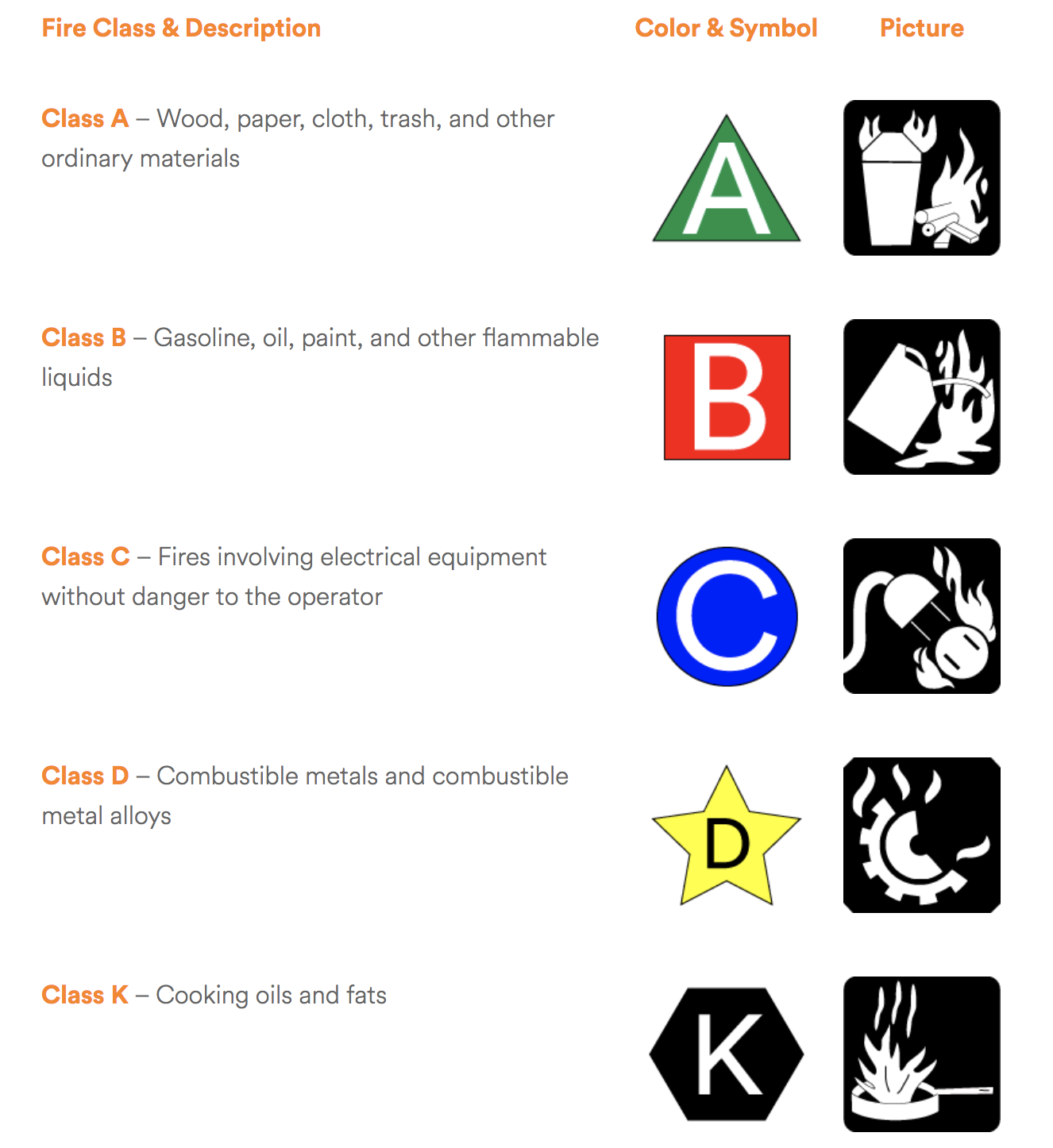
My husband Alek is a firefighter paramedic, so our home is equipped with all of the stuff you would expect: four smoke detectors, two carbon monoxide detectors, several first aid kits, and a rather large fire extinguisher.
Did I mention we live in a 900-square foot loft?
We’re perhaps a little OVER prepared, but I saw our fire extinguisher yesterday and realized something: I had no idea how to use it.
Yes, that’s right. I’m married to a firefighter and I had no idea how to use a fire extinguisher. (I also live in Utah and don’t know how to ski, but that’s neither here nor there.) So I asked Alek and his crew for some fire extinguisher basics I could share.
Tip 1: Use the right extinguisher for the right job
Depending on the size of your home, it’s a good idea to have a few fire extinguishers around — in the kitchen, in the garage, and near all turkeys you may be deep frying. It also doesn’t hurt to have one in your car, boat, or RV.
What fire extinguisher should you get?
When you buy a fire extinguisher, look for the following letters and symbols to determine which fire classes the extinguisher will put out.

A combination ABC fire extinguisher will put out just about every fire except hot metal fires. For that, you need a Class D fire extinguisher, mostly found in chemical labs.
Tip 2: Know where to find the fire extinguisher
This might seem pretty straightforward, but it is important that everyone in your home (including house sitters, pet sitters, and baby sitters) knows where to find the fire extinguisher. It’s also important to have a clear, unobstructed path to the extinguisher.
Tip 3: Make sure your fire extinguisher is up to date
Perform a physical check of your fire extinguisher every year, maybe around the same time you replace the batteries in your smoke detectors.
- Make sure the external condition is good — no damage or cracks on the base, hose, or nozzle.
- Lift it up to make sure it is heavy. This means it still contains extinguishing agent.
- Look at the pressure gauge to make sure it is still pressurized in an operable range (operable = green).
- Finally, the safety pin should be tied or otherwise attached to the extinguisher so it can’t come loose when it’s not supposed to.
Tip 4: Know how to use it.
Turns out, all extinguishers have instructions printed on them. But all you have to remember is this easy acronym: P.A.S.S.
- P: PULL the safety PIN from the handle
- A: AIM at the base of the fire
- S: SQUEEZE the trigger
- S: SQUEEZE the trigger
- S: SWEEP from side to side
Tip 5: Know when to say when
If the fire continues to grow, your escape route could be threatened, the extinguisher runs out, the extinguisher is not effectively stopping the fire, or you are no longer able to fight the fire safely, leave immediately and call 911!


